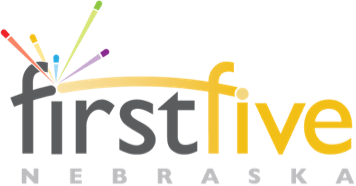Child Care and Public Transit Dashboard
Public transit and licensed child care are essential components of Nebraska’s infrastructure. For many working parents in Lincoln and Greater Omaha, the proximity of child care options to public transit lines and stops plays a central role in their ability to access early childhood programs and reach their own workplaces in a timely and consistent manner. First Five Nebraska partnered with Child Care Aware of America (CCAoA) and the Alliance for Early Success to develop an interactive tool that explores how these systems relate to one another in metropolitan Nebraska.
The Child Care and Public Transit Dashboard is designed to give policymakers, city administrators, urban planners, economic developers, employers and child care providers a detailed snapshot of the child care and public transit landscape in Lancaster, Douglas and Sarpy counties. Our goal is to illuminate current challenges and opportunities and, moving forward, provide a basis for making well-informed and strategic decisions to increase access to licensed child care in our state’s urban centers.
How to Use This Dashboard
Map Elements
- Pop-ups: Clicking on an individual dot or dot cluster on the map will activate a pop-up window with information about one or more child care programs in the selected area. Clicking the down arrow in the pop-up header will expand the window to display the name of the program and program type, distance from the nearest bus stop and additional information about Step Up to Quality and child care subsidy participation. If you clicked on a dot or dot cluster representing multiple programs, you can use the left and right arrows to cycle through the different programs in your selection. The closer you are zoomed in to the map, the easier it is to select individual child care programs rather than clusters.
- Map Controls
Other Dashboard Elements
- Filters: These controls allow dashboard users to enter search parameters for filtering child care providers based on various criteria including program type, Step Up to Quality level and walking distance from the nearest city bus stop. To enter precise distance and walking time filters, use the input fields instead of the slider bars. Example: setting the filters to identify center-based programs in Douglas AND Sarpy counties who participate in any level of Step Up to Quality AND are within 5 minutes walking distance from a bus stop returns a result of 73 providers.
| Note: The dashboard allows users to filter data EITHER by Walk Time OR Walk Distance, but not both simultaneously. When switching between these two filters, be sure to hit the “reset” button before entering your new parameters. |
- SUTQ “Donut”: The “donut” indicator in the upper-right corner of the dashboard shows what portion of filtered providers participate in Step Up to Quality. For example, using the same filters as above, but choosing “select all” under Provider SUTQ Level returns a result of 258 providers, 73 of whom are Step Up to Quality participants.
- Type of Care Visualizer: If multiple child care program types are selected in the Child Care Program filter, the “Type of Care” section in the lower-right corner of the dashboard will display a bar graph comparison of the filtered results.
Mobile Viewing
While it is possible to view and interact with the Child Care and Public Transit Dashboard on mobile devices, this tool is optimized for use on laptop or desktop computers.
Data Sources & Methodology
Data Sources
- Child Care Providers: The licensed child care programs were obtained from First Five Nebraska. Data was merged from two sources: Licensing Agency (Nebraska Department of Health and Human Services via the Child Care Referral Network) and the Step Up to Quality (SUTQ) website. Licensing data was pulled on January 10, 2023, and SUTQ was obtained via web scraping on February 2, 2023.
- Children under 6 with all parents in the labor force: The number of children under 6 with all parents in the labor force in each census tract was obtained from the U.S. Census Bureau, 2017-2021 American Community Survey 5-Year Estimates, B23008. We use this table to estimate the number of children who may need child care, as all available parents are participating in the labor force.
- Children under 6 years living below 185% Federal Poverty Level: The average number of families with children under six with household incomes at or below 185% FPL in each census tract was obtained from the U.S. Census Bureau, 2017-2021 American Community Survey 5-Year Estimates, B17024. We use this measure as it is often the eligibility requirement for families to obtain a child care subsidy.
- Lincoln Bus Routes and Bus Stops: Data was obtained from StarTran public transit bus system through First Five Nebraska. Date pulled April and May 2023
- Omaha Bus Routes and Bus Stops: Map layers were obtained from ArcGISOnline public library. Map layer updated October 2022.
- Omaha Street Map Bus Route and Bus Stops: Data was hand-edited from Final_Streetcar_Graphic_Summary-3.6.18.pdf (ometro.com). Date created April 2023.
- Walking Paths: OpenStreetMap (OSM) routes, downloaded via geofabrik.de in April of 2023. Only streets and paths that were appropriate for children with adult supervision to walk were included.
Methodology
- Network Analysis: The model uses the ArcGIS network analysis origin-destination (O.D.) cost matrix to evaluate the walk distance from bus stops to child care programs. The model calculated the shortest distance between each child care provider to its closest transit stop routing along the OSM walking paths. Walking times were estimated based on a walking speed of 2 miles per hour for children with adult supervision.
